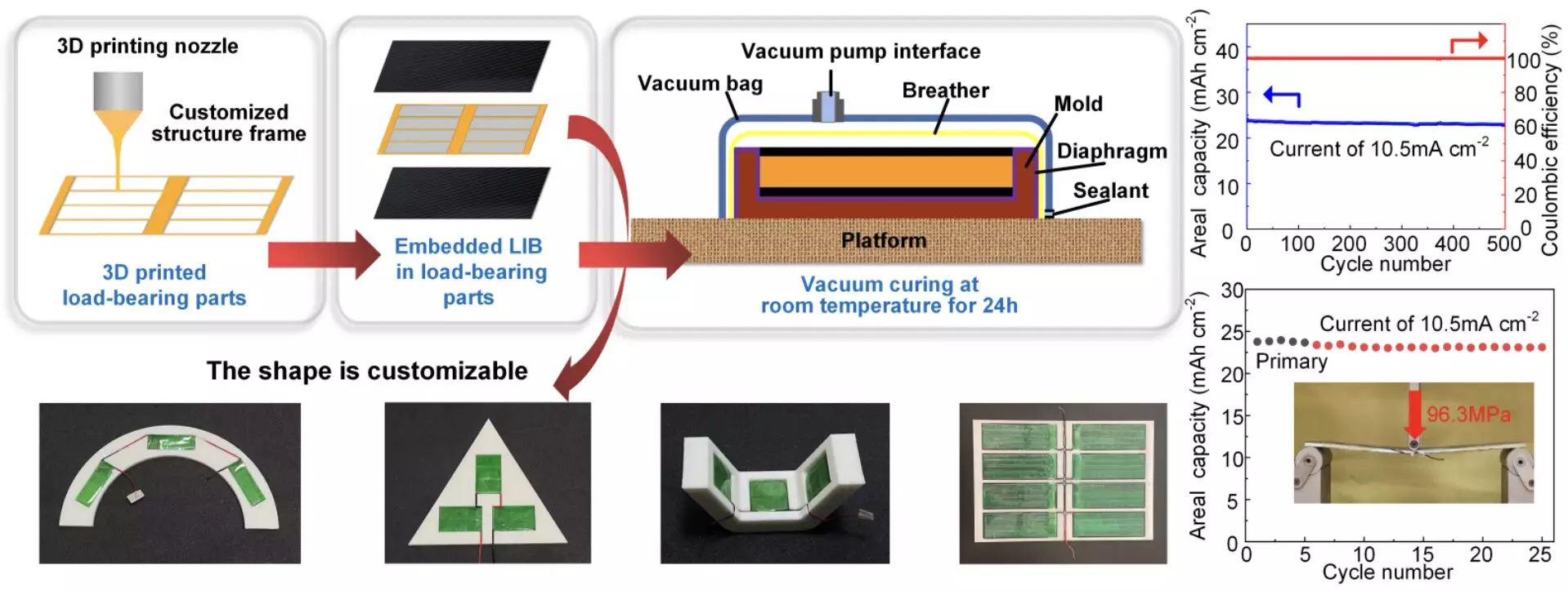As the global demand for electric vehicles (EVs) surges, the need for efficient and durable energy storage solutions becomes increasingly critical. Traditional battery systems often fall short in delivering both structural integrity and energy capacity, necessitating the development of advanced technologies that can integrate these functions. One particularly exciting innovation in this field is the concept of structural batteries, which double as both energy storage and integral components of a vehicle’s architecture. This article will delve into the latest advancements in structural battery technology, particularly the groundbreaking work conducted by researchers at Shanghai University.
Structural batteries represent a significant evolution in energy storage design by integrating battery function directly into the structural components of vehicles and other platforms. This dual-purpose approach not only saves space and weight but also enhances vehicle efficiency. As electric vehicles encounter obstacles such as long charging times and limited operational ranges, the need for innovative solutions becomes paramount. A well-designed structural battery could address these issues by providing higher durability and performance tailored to the demands of the automotive sector.
A team from Shanghai University, led by Yinhua Bao, has made promising strides in this domain. Their research, published in *Composites Science and Technology*, outlines a novel methodology utilizing 3D printing technology to create customizable structural lithium-ion batteries. This allows for a diverse range of geometrical shapes, making them suitable for various applications beyond just electric vehicles.
One of the core advantages of the research conducted by Bao and his collaborators lies in their scalable fabrication strategy. By harnessing the versatility of 3D printing, these researchers can create specialized structural frameworks that accommodate energy-storage materials. Such adaptability in design is crucial because it facilitates tailored solutions for various industries including automotive, aerospace, and robotics.
The research specifically emphasizes reducing the load on energy storage components through smart structural designs. By employing a decoupled design, where the structural framework protects the energy storage unit from stress and deformation, they have managed to significantly improve the longevity and reliability of the batteries. Bao notes that minimizing damage to the energy-storage materials allows the batteries to maintain excellent capacity, ultimately prolonging their service life.
Despite the promise inherent in structural batteries, previous attempts have often encountered hurdles, particularly regarding energy density and mechanical performance. To tackle these issues, the research team focused on optimizing both the material choices and the structural design. Utilizing finite element analysis, they simulated potential stresses and failures during operation, allowing for refining the layout of battery cells to mitigate the consequences of localized damage.
In laboratory tests, the prototype structural battery displayed remarkable resilience, withstanding significant tensile and bending stresses. Impressive metrics were recorded, including an energy density of 120 Wh/kg and efficient performance under repeated operational conditions. The results were particularly encouraging, with the battery maintaining up to 92% of its capacity after 500 cycles of operation, underscoring its potential for practical, long-term applications.
The implications of this research extend well beyond electric vehicles. The flexibility of structural battery technology suggests that it can be effectively integrated into various systems including autonomous robots, drones, and logistic vehicles, adding value through enhanced performance and space efficiency.
As the research team looks ahead, they aim to explore additional applications of structural batteries in unmanned aerial vehicles (UAVs) and robotics. The potential for these batteries to transform industries by making energy storage more compact and robust is immense. However, scaling up the production to meet the industry’s needs will be a key focus moving forward.
The advancements in structural battery technology developed by Bao and his team at Shanghai University represent a vital step towards a more energy-efficient future. By integrating energy storage with structural components, the design of electric vehicles and robotic systems could be revolutionized toward greater efficiency and effectiveness. This research not only promises to enhance the capabilities of electric vehicles but also opens doors for a new era in energy storage applications across various sectors. As researchers continue to refine and expand upon these innovations, the future of transportation and energy storage looks promisingly robust.

